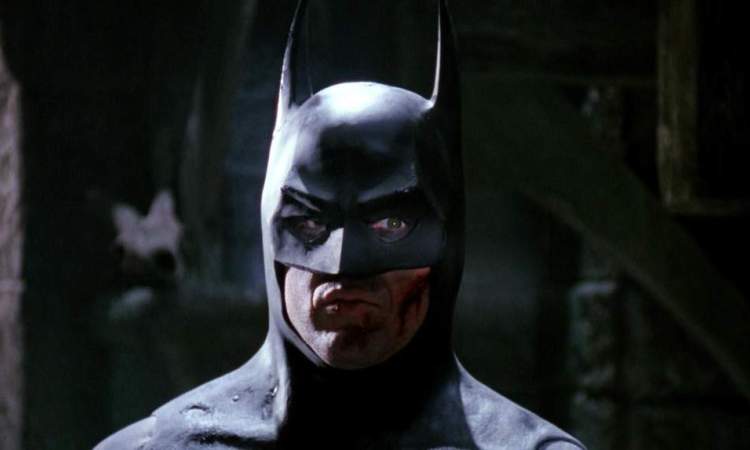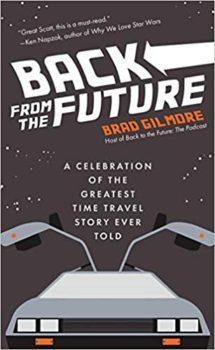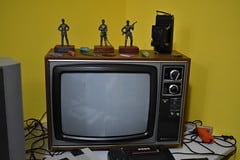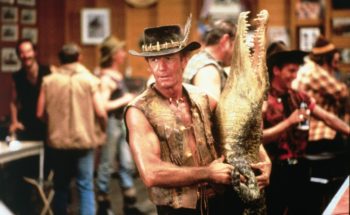
Fans are always concerned with the casting choices that go into movies they’re looking forward to, but nothing captured this more back in 1988..
In 1988, Michael Keaton was chosen to play Batman in Tim Burton’s upcoming version and the decision caused a tremendous backlash from movie executives to letter-writing campaigns from fans directed at Warner Bros. Studios opposing the decision.
With the recent announcement of Robert Pattinson tapped to play the caped crusader, there was an understandable large amount of backlash over the choice. How could a former teen heartthrob play this iconic role? This, however, is nothing new for the character of Batman as the casting choices have always garnered groans, concerns, and ugly backlash over the years.
The choice of Ben Affleck was seen as ridiculous by many not to mention the fact Val Kilmer, and then George Clooney of all people had been chosen to play the Dark Knight.
But we need to go back in time to when this all really began, and the all-time fan backlash to the actor choice to play a comic book hero.
This is a look back at the original 1988 backlash for the choice of Batman; Michael Keaton.
The Red Headed Step Child Of The Movie Industry
We now, of course, live in the age where it seems asinine to question the making of a comic book movie – but this hasn’t always been the case. Since Marvel and D.C (even if you think the latter is crap) rule Hollywood, it’s hard to imagine studios once didn’t want to touch a superhero movie with a ten-foot pole.
When Superman came out in 1978 it was seen as a big gamble to be released by a major motion picture studio. Comic book superheroes were too much kid fare that it was seen as overly juvenile and not worthy of a feature film. Sure, you could have your cartoon versions no problem but going beyond that was seen as career suicide.
I think some of this stems from the old Batman TV show which was an over the top, campy, cartoony type of entertainment. You had the Spiderman cartoon show from 1967 but it was still just that, a cartoon.
So putting out a Superman movie in 1978 was a definite risk. At the very least, Superman is probably the most famous comic book character and everyone is familiar with the history and backstory of Clark Kent and the planet Krypton – so if anything would work, it would be that.
Releasing SuperMan
Because a movie like this was considered a tough go, several directors, writers, and producers had gone through the process before bowing out. They finally landed on Richard Donner to direct the film. It had also been in mind since 1973 and would take a while to convince executives and studios to get on board.
Interesting fact: They were actually filming both the first Superman and the sequel, Superman II at the same time but it was causing such chaos that they stopped the filming of the sequel to focus on the main picture – even though 75% of the sequel was done.
The first drafts of Superman had a very campy tone to them and this would make sense if you think about it because that’s the only way people really knew comic book based entertainment. Donner was responsible for changing the tone and the direction of the movie which would help lead to its success. There were a few other things they had going for it:
- They were able to convince screen legend, Marlon Brando, to play Superman’s father Jor-El, and this gave the movie some more clout. Kind of in the same way casting Alec Guinness gave some legitimacy to the first Star Wars.
- The casting of Christopher Reeve as Superman was PERFECT. He had the look and on screen charisma to perfectly capture, and embody, Superman. For most people, he will always be the true Superman.
Want to hear some other choices that auditioned/were considered to play Superman?
- Paul Newman
- Sylvester Stallone
- Robert Redford
- Bruce (Caitlyn) Jenner
- James Caan
- Josh Brolin
- Christopher Walken
- NIck Nolte
- Jon Voight
- Kris Kristofferson
- Charles Bronson
- Burt Reynolds
- And, not making this up, Neil Diamond
So it had a few good things going for it, but one massive detractor – it was now the most expensive movie ever made. With an unheard of budget of $55 million, this was throwing everything they had at it.
But, as you know, it worked.
The After Effects Of Superman
Superman was obviously a massive hit and everything about it worked; the mythology, the acting, the special effects, it all came together. The movie would make $300 million, be a commercial and critical success, be nominated for Academy Awards, and be the second highest grossing film of the year.
Looks like they got it right. But that would be pretty much as far as it would go for getting it right…
The Superman sequels left a lot to be desired, and the franchise seems to slide downhill pretty quick. The original Superman was seen as kind of a one-off hit and there was doubt the success could be duplicated again.
Comic book movies were now back to where they started – not seen as a worthwhile pursuit.
The Dark Knight Rises
Things were quiet on the superhero movie front for almost a decade, but the Batman story goes back to the time of the first Superman movie as it itself would take a decade to develop.
Michael E. Uslan was a 28-year-old comic fan and aspiring producer and he snatched up the film rights to Batman in the late 70s. He was pitching the idea of a Batman movie to studios and was obviously getting rejected left and right.
If a Superman movie was like pulling teeth to develop, no one was going to touch Batman – especially because it had the direct connection to the campy Adam West version of the 60s. He was told by executives that Batman now was “as dead as the dodo”.
Ulsan had one pivotal ideal though – what if instead of the cartoony/campy approach they went in the complete opposite direction. A dark and serious movie had never been done, or attempted, with any comic book character before and it might be the way to create a brand new form of entertainment.
As good as Superman had been, the sequels had killed any momentum and Batman as a character was too damaged due to Adam West. The comic book version of Batman had now distanced itself from all that and was putting out grittier and darker content. So maybe this was the right approach for a new movie.
Putting The Original Batman Together
It would be a decade long slog to bring Batman to the big screen as – since no one had faith in it – finding producers was almost impossible. But that all changed after a movie called “Pee Wee’s Big Adventure”.
Directed by a young animator named Tim Burton, Pee Wee’s Big Adventure was the perfect combination of direction and art direction many people had never seen. Tim Burton was not a “comic book guy” but he had the sensibilities, and vision, that was needed to bring this new version of Batman to the silver screen.
Getting him on board was considered the real turning point and he, along with talented writers, designers, actors, musicians, and architectures made for a perfect storm. With all this in place, they could create the shadowy, gritty, and psychologically rich style of movie that wasn’t for kids and would attract an older crowd.
At the core of this, the story of Batman was really the story of Bruce Wayne. Bruce Wayne is the one with the dark and damaged past and that develops into the vigilante of Batman. He is a tortured soul who – even though rich – is always longing. This would be a character-driven focus and not just a “superhero action movie”.
That meant finding the perfect person to play him. And that’s where this story really picks up.
Who Would Play Batman To Match The Tone Of The Movie?
Often forgotten as another character in the Batman movies is the city of Gotham. It serves as a main character and the tone and feel of it needed to be just right – and that’s what they achieved with British production designer Anton Furst.
They also landed another huge asset; Jack Nicholson would be playing the joker. The idea is they wanted to capture some of what Nicholson had done in creating the character of Jack in “The Shining”.
Who would they cast to play across from this Hollywood heavyweight and match the mood of Gotham city?
The producing team made up of Jon Peters and Peter Gruber decided they didn’t want to cast an unknown who “looked like Batman” the way Superman did with Christopher Reeve. They also didn’t want to base their casting around purely dramatic stars who happens to be tall and well built.
Tim Burton had recently made the movie Beetlejuice even though he had been working on a script for Batman. The success of Pee-Wee’s Big Adventure allowed him to have some freedom now, but even though Warner Bros. paid for the Batman script development, they still didn’t want to green-light the film.
Through all this red tape Burton had just decided to focus on Beetlejuice as it was a more creative, and unusual, movie. The script for Beetlejuice was actually given to Burton by music mogul David Geffen who suggested an actor named Michael Keaton to play Beetlejuice. Believe it or not, Sammy Davis Jr, was the original choice but Burton trusted Geffen even though he had never heard of Michael Keaton.
Beetlejuice was another commercial, and critical success earning multiple Oscar nominations and this cleared the way for Batman.
Burton was also going to bring along Michael Keaton to play the caped crusader and then everyone went nuts.
The Backlash Cometh
Since Batman was going to be a study of Bruce Wayne, Burton believed that Keaton had the acting chops to get inside the head of Wayne and give him a darker tone. Burton made mention that it was Michael Keaton’s eyes that was a big selling point in giving him the role as they had a very wild look to them which seem to fit with the character.
But Keaton was a comedic actor at his core and known for his work in “Mr. Mom”. How could he play a superhero? He wasn’t even tall or built like a comic book hero. Burton was going full on with the dark tone of the movie mirroring what he had seen in the comics: The Dark Knight Returns, and The Killing Joke.
All of this was coming together to create a backlash by fans and the studio. They were thinking having Burton meant it was going to be too much like Pee Wee’s Big Adventure. You think of Batman and you think of the campy 60s show, and you think of Michael Keaton and you think of comedies. Why weren’t they at least going to go with some big actors considered to play Batman including:
- Mel Gibson
- Harrison Ford
- Tom Selleck
- Charlie Sheen
- Kevin Costner
- Dennis Quaid
- Pierce Brosnan
- Ray Liotta
Purists and comic books fans hated the idea of Michael Keaton playing Batman and they were vocal about it. Can you believe if the internet had existed back then? The entire web would have melted down into scrap heap. It got so bad that Warner Bros. studios received 50,000 letters of protest over the casting choice. Yikes.
Even the people involved with the movie weren’t stoked on the choice including Uslan and Batman creator himself – Bob Kane. In an interview on superherohype.com, Uslan had mentioned the following things:
“I was the very first one that was apoplectic when I heard about Michael Keaton that Tim wanted. I went absolutely crazy.”
“…the dramatic bellowing was so great and huge coming only from the mainstream press so it was only magazines, newspapers, radio, and TV. And the world was inundated to the point that I thought the fans were going to show up and surround Warner Bros. with torches and pitchforks.”
What Was Everyone Else Saying?
If you remember this time, you recall that it wasn’t pretty. Here’s part of an editorial from the L.A. Times July 3, 1988:
“(Keaton) might have made a good joker, but his comic style, which he seems unable to shake (but can amplify), has doomed this “serious” treatment of Bob Kane’s character to the same tired, boring level of artificial “camp” that made the TV series a hit yet simultaneously doomed it to an early cancellation.:
“…by casting a clown as Batman, Warner Bros. and Burton have defecated on the history of Batman and on the hopes of those who appreciate the character and his potential.”
At the Chicago Comic Convention of July 1988 the tone was also less than cordial regarding the choice of Keaton. It was noted how the mood of the fans was hardly very confident. They were taking the decision very personally, and the thought was this was an intentional decision to make one of their heroes – and by association them – “look stupid”.
It was the same type of sentiment being expressed at the Chicago Comic Con as everyone thought they were getting Beetlejuice blended with Pee Wee’s Big Adventure.
The Success Of Batman
You’re no doubt aware of the success of Batman and that it truly captured this new dark and gritty tone. Even after going nuts about the casting of Keaton, Uslan started to understand where Tim Burton was coming from – and this is before ever seeing the final product.
Uslan realized how brilliant Tim Burton was in that his goal was to make the world buy this new version of a comic book movie. He also made the point that in a heavyweight actor like Jack Nicholson, you needed someone who could go toe-to-toe in a scene with him – Nicholson would wipe the screen with an unknown actor and Keaton was able to hang.
It all came back to being about Bruce Wayne and they realized that Keaton had the dramatic chops to pull this off. They were able to see a rough cut edit of a movie called “Clean and Sober” that Keaton had made and they realized how good he really was.
Seeing the first dailies and footage of the movie would start to put them at ease and the execution of the classic line “I’m Batman”, by Keaton helped return the character to the darkness and dignity created way back in 1939.
Fun fact: Keaton improvised the “I’m Batman” line as the script called for “I am the night”.
Here are the other little side notes about the release of Batman in 1989
- It grossed $40.49 million its opening weekend breaking the opening weekend record
- It was the fasted movie ever to $100 million
- It finished with $411 million worldwide (adjusted for inflation that’s about $850 million today)
- It’s the 66th highest grossing film of all time in North America
- Made $150 million in home video sales
- It’s considered that in North America alone it sold around 60 million tickets. If you consider the average movie price today is around $9.01 you’re looking at it making around $540 million. That would put it at around 5th on the list of highest grossing Marvel movies. It was a monster hit is what I’m trying to say…and it opened on WAY fewer screens. The Marvel movies open on around 4,300 screens and Batman opened on just 2,194.
Batman is also responsible for making the opening weekend box office receipts become much more important and it narrowed the time between theatrical release and home video release. Before that, movies took forever to be released on video. There was such a demand for Batman to be able to be taken home that the time was shortened to get it into stores while it was still hot, and it worked.
Final Thoughts
The great Michael Keaton backlash of 1988 was – I believe – justified at the time. People hold these things very near and dear to their heart – but they just didn’t have all the information. Michael Keaton was kind of a nobody to us and he just didn’t look like Batman. However, the ultimate vision that Tim Burton had with Batman was fulfilled, and Michael Keaton was a huge part of that.
What seemed like a senseless choice became the obvious one to the point future castings of Batman would be criticized because they “weren’t Michael Keaton”. You’d think after the success of the choice of casting Keaton people would have been more trustworthy.
Fast forward a few years and the decision to cast teen comedy movie star Heath Ledger brought the same type of backlash. Everyone lost their crap at the choice of him playing the Joker, me included, but we all ended up eating our words on that one didn’t we…
The backlash in 1988 should have been enough for fans to – overall – trust the casting choices for future movies. I never thought Chris Pratt would be an ideal choice to be in big-time movies like Jurassic World, ditto for Robert Downey Jr. in a superhero movie. Now we can’t picture them without them.
We’ll always have our prejudices and choices for who we envision for specific roles, but the casting of Michael Keaton back in 1988 showed movie studios how seriously the fans take this.



